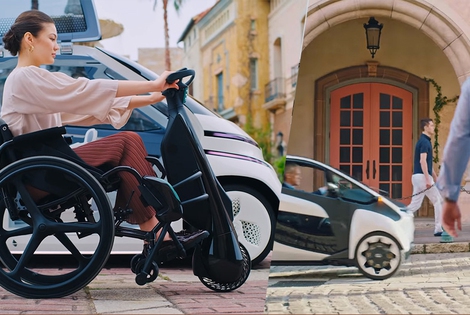
Milan has announced one of Europe’s most ambitious mobility schemes, known as Strade Aperte (open roads). Its goal is to reduce cars in phase 2 of the lockdown by increasing bike lanes and pedestrian areas.
From Japan to Hawaii in 5 days and 5 nights, crossing the Pacific Ocean with solar power only. Piccard’s and Borschberg’s epic journey finally ended.
Last Friday, 3rd July, the epic round-the-world journey of Solar Impulse 2 finally ended. At 5.55 (Hawaii’s local time) the above mentioned solar-powered airplane has landed after a 7,200km flight of 5 days and 5 nights from Japan to these American islands, at an average speed of 61.19 km/h.
HE MADE IT! @andreborschberg just touched down in #Hawaii after a record-breaking flight! #futureisclean @b… https://t.co/WQWsRKiCEi
— SOLAR IMPULSE (@solarimpulse) 3 Luglio 2015
Solar Impulse 2, which left the ground in March from Abu Dhabi, reached its goal: travelling the globe without using a drop of fuel. Well, the pilot’s working conditions are impossible for common people. A typical day included eight rest pauses of 5 to 20 minutes. A daily intake of 2.4 kg of food (breakfast, lunch, dried fruits and chocolate), 2.5 litres of water and 1 litre of supplements. And 30-45 minutes of yoga per day to stay in shape.
“What André has achieved is extraordinary from the perspective of a pilot”, declared Bertrand Piccard, Solar Impulse’s president, pilot and inventor. “He has also led the technical team during the construction of this revolutionary prototype. It is not only a historic first in aviation it is also a historic first for renewable energies”.
An unprecedented adventure demonstrating that through the use of some technologies an airplane powered only by the sun can fly night and day, without a drop of fuel and with zero emissions. The future of aviation and clean technologies is near, today more than ever.
Siamo anche su WhatsApp. Segui il canale ufficiale LifeGate per restare aggiornata, aggiornato sulle ultime notizie e sulle nostre attività.
![]()
Quest'opera è distribuita con Licenza Creative Commons Attribuzione - Non commerciale - Non opere derivate 4.0 Internazionale.
Milan has announced one of Europe’s most ambitious mobility schemes, known as Strade Aperte (open roads). Its goal is to reduce cars in phase 2 of the lockdown by increasing bike lanes and pedestrian areas.
Formula 1, the world’s most important auto racing championship, has decided to turn the page and aim for carbon neutrality with the support of its teams, drivers and the whole racing circus.
Toyota and LifeGate began telling the story of hybrid mobility back in 2006, now, on the road to the Tokyo 2020 Olympics, they’re still treading the path of sustainable mobility. Here are the main steps of the journey.
Germany’s first solar bicycle lane could be the prototype for the roads of the future. The photovoltaic tiles melt snow and ice, and are capable of absorbing noise.
The Vespa is back in an electric version. Production has just started and the first models can be reserved online starting from October.
The city of Utrecht, in the Netherlands, is home to a bridge for cycling and walking that stretches over roof garden of a Montessori school. This project enhances practicality and will allow families to bring children to school by bike, passing through green areas. Despite their functionality, bridges are often seen as an infrastructure that is
The Lego hair bike helmet is the latest Internet craze. For now it’s just a prototype but production on a large scale will probably start soon.
Just as fires often give way to new growth, after the Dieselgate scandal, which saw Volkswagen cheating on US emission rules, the German car manufacturer radically changed course, beginning to focus on sustainable mobility. The German car company aims to propose thirty zero-emission models and produce at least one million battery electric vehicles by 2025. An ambitious mission
Sustainable, two-wheel mobility is triumphing in Copenhagen. After years of investments, policies, and infrastructural changes, bikes now outnumber cars in the city centre. The website Copenhagenize has released data linked to the number of vehicles entering the city centre, which are monitored by the city’s administration on a daily basis. Last year, 265,700 bikes have entered







